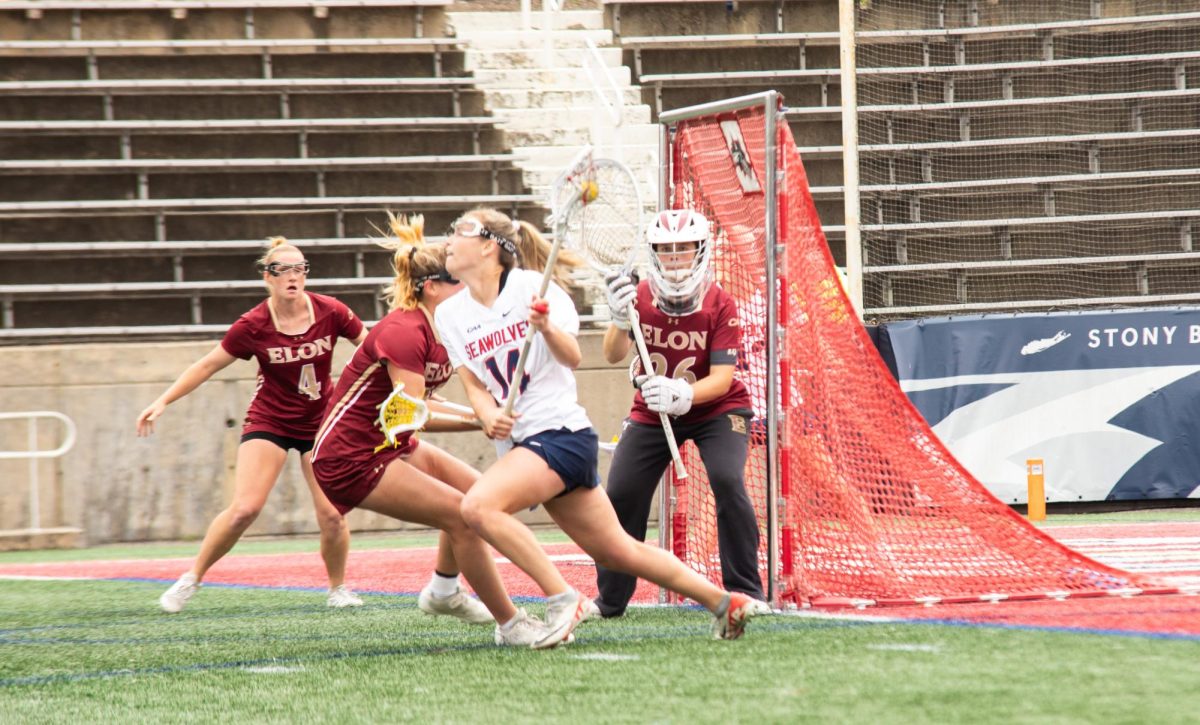More than 50 female students at Stony Brook University did something that they don’t do on an everyday basis: they wore a hijab.
A hijab is a head covering that Muslim women can wear to cover their hair, and that’s exactly what these women did on Thursday, April 14. Junaid Ikram, a sophomore biomedical engineering major, said that a woman wears a hijab to show that she is not available to society.
“When a woman goes out, she needs to cover herself,” said Ikram, a muslim. “A man can have different kinds of thoughts if she doesn’t cover herself, like, ‘Oh, this girl, she wants to have fun.’”
The Muslim Students Association, or MSA, celebrated Islam Awareness Week from April 8 to April 15. Thursday was used to discuss the role of women in Islam. According to the members of the MSA, the role of women has often confused non-muslims.
The hijab leads to many of the questions concerning the faith. Thursday was referred to as “Hijab Day.” A lecture called “Opression or Liberation?” was held that night to dispel some misconceptions about the hijab and for non-Muslim women to share their experiences wearing the traditional clothing for a day.
The consensus was that some people outside of the faith think that a hijab is a symbol of oppression toward women. Sanaa Nadim, chaplain of the MSA, said that is not the case at all.
“It’s a modesty issue,” Nadim said. “Women put the hijab on to be closer to God. Just like some Hasidic women choose to cover their hair and a Rabbi wears a Yarmulke. However, it should also be said that not wearing a hijab doesn’t make you not Muslim.”
Nadim said Hijab Day started in the spring of 2008, when then president of the university at that time, Shirley Strum Kenny, asked Nadim what it felt like to wear the hijab. Nadim let Kenny try one on and then got the idea to have a solidarity day.
“It’s a day for Muslim women to be in solidarity with their non-Muslim sisters,” Nadim said. “ I wanted people to feel that putting it on doesn’t oppress you. It doesn’t affect your brains.”
Nadim has been wearing her hijab since 1984.
“When I put it on people didn’t understand why I was wearing it,” Nadim said. “One man came up to me and asked ‘What’s up? Is it fortune telling time?’”
Nabiha Zakir, president of the MSA, said that about 70 women participated in hijab day this year and 130- a majority among those present- attended the lecture that night.
“We had 50 scarves to hand out to girls and we ran out of them,” said Zakir, who also wears a hijab.
“Wearing the hijab liberates me; it makes me free,” Zahir said. “People are forced to judge me based on the fact that I’m a human being, not on the fact that I have an hour-glass figure, but on my intellect and however good or bad that might be.”
On Thursday night, girls who participated in hijab day took the stage one-by-one, gave their first name and explained how their day went wearing the hijab.
One attendee, Faith, found out about the event through an email.
“I was nervous about wearing the hijab,” Faith said when she took the stage. “I also didn’t know how to put it on so I had to watch a few YouTube videos on it. I felt responsibility wearing it because I felt that people were going to think I was Muslim so I didn’t want to do anything impolite.”
Mariana went on stage and admitted that she was in the bathroom for about an hour in the morning trying to figure out how to wear her hijab.
“I think I rocked my hijab three different ways,” Mariana said.
When Maria took the stage she let everyone know that she was currently covering up her trademark curly hair.
“It’s sad that some people have a negative connotation with the hijab,” Maria told the audience. “I think you have a lot of courage to wear it everyday. You guys are beautiful even though you cover yourself up.”
For Nadim, who has been the chaplain of MSA for 20 years, she wears her hijab because she wants to. She said it has never oppressed her.
“We really need to get rid of the fog that is so political and look at the reality that 99.9 percent of the time people are the same,”Nadim said.












Gordon Hide • Apr 27, 2011 at 5:16 am
It’s a good thing that women who want to wear the hijab were supported in this way. Nevertheless, this kind of comment and others:
“When a woman goes out, she needs to cover herself,” said Ikram, a muslim. “A man can have different kinds of thoughts if she doesn’t cover herself, like, ‘Oh, this girl, she wants to have fun.’”
shows that women feel they can’t get the kind of consideration they are entitled to as fellow human beings unless they mark themselves out in this way.
The hijab is not a problem for women it’s a sign of their junior status in a male dominated sexually repressed society. If there are those who want to see the end of the hijab they should be attacking men’s problem and not harassing women.